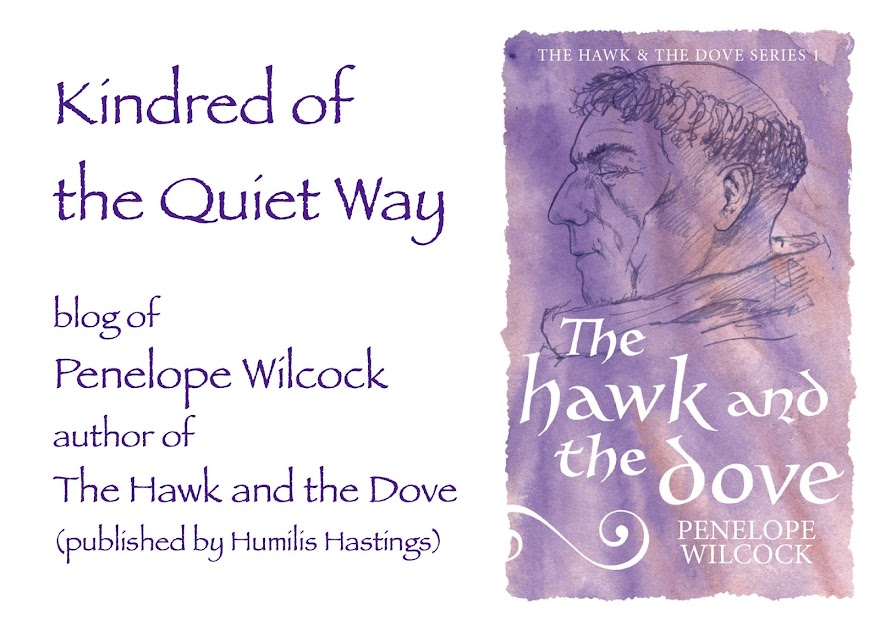During
the Middle Ages, there were so many social, political and theological
constraints. To step outside convention and orthodoxy was dangerous – it could
cost your life.
Maybe
because it was so, artists and writers became adept at coded signals. The
medieval mind loved patterns and riddles, ever seeking and inserting hidden
messages – in poetic forms, in the physical attitudes and attributes and attire
of the subjects of paintings, in juxtapositions and order, in shapes that
called to mind other shapes. So much was said in what remained unsaid: and
people became accustomed to looking for the silenced word.
In
his plays, Shakespeare conveys much about relationship – harmonies and
disharmonies – by the forms in which he presents dialogues and soliloquies.
The
Hawk and the Dove series is written
throughout in prose evocative of the medieval mindset. Some reviewers express
disappointment at the modernity of some of the phraseology – but what I tried
to do was express the spirit I found in medieval attitudes and writing, not
recreate the forms. Though here and there I’ve enjoyed working with medieval
literary conventions – for example, the frame tale form of the first two
volumes and the evocation of the Fioretti in the vignettes of those first two
books.
And
I wonder – if you have read The Beautiful
Thread, did you find the sonnet hidden in it?

4 comments:
Nope I didn't...more clues please :-D
:0)
I'll post again and explain where it is. xx
I just finished The Beautiful Thread and I did not catch the sonnet (but thank you for the explanation!). As I finished the book, I was thinking how much I would love to share these characters and some of the lessons they learn with my children. Any plans to create picture books as a way to introduce young readers to the rich world of the Hawk and the Dove?
:0)
I'm so glad you enjoyed The Beautiful Thread.
At present there are no plans to create picture books to accompany the series for children, but the first book in the series is specially written to be accessible to all age readers, and the second book is written to be accessible to older children and teens as well as adults. I often hear from readers who tell me the first book - The Hawk and the Dove - is one they read aloud as a family with their children (every year, in some instances), and the first three books in the series are part of a homeschool syllabus/curriculum reading list in the US. So maybe The Hawk and the Dove is the place to start with children, then they can explore the rest of the series as they mature.
xx
Post a Comment